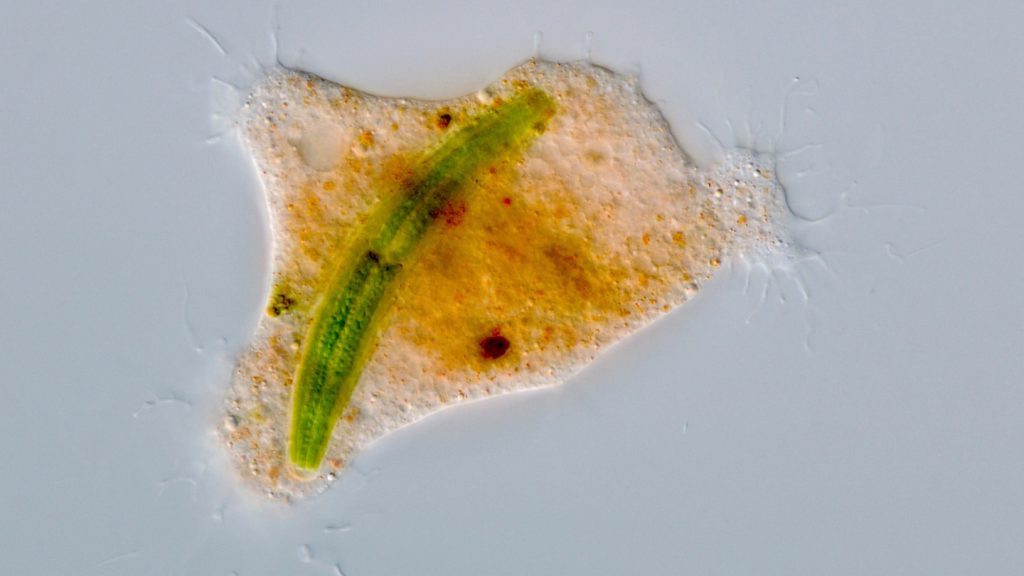Researchers have discovered a new species of amoeba-like microorganism that feeds on algae in a unique and previously undocumented way. These creatures, called vampyrellids, engulf and split apart the cells of their prey, extracting the insides and tossing out the cell walls. The discovery of this behavior was surprising to scientists, who are now studying how these vampyrellids manage to accomplish their feeding process. The species responsible for this unique behavior has been named Strigomyxa ruptor, which translates to owl slime.
By conducting feeding experiments, scientists have discovered that S. ruptor keeps the engulfed algae in a specialized compartment within its body. Enzymes in this chamber help dissolve one side of the algae cell wall, while the other side remains attached to the chamber wall. As the compartment expands, the algae cell swings open, allowing S. ruptor to access and consume the contents. The microbe then spits out the empty cell wall once it has finished its meal. This method of feeding is particularly unusual as it is performed by a single-celled organism, showcasing the intricacies of evolutionary adaptations.
The vampyrellids in question were initially identified through time-lapse photography, which captured the amoebas engulfing and consuming the algae. The researchers were astonished by the feeding behavior of these microorganisms and set out to investigate the mechanics behind their unique method. Through genetic analysis, it was determined that the newly discovered microbe belongs to a previously unknown genus and species, underscoring the diversity and complexity of microscopic life on Earth.
The discovery of Strigomyxa ruptor provides valuable insights into the adaptability and resourcefulness of microscopic organisms in their pursuit of sustenance. By observing the feeding mechanisms employed by these vampyrellids, scientists are able to better understand the evolutionary strategies that have developed over time. The ability of a single-celled organism to exhibit such sophisticated feeding behavior sheds light on the capabilities of these tiny creatures and highlights the ingenuity of nature’s designs.
The researchers who made this groundbreaking discovery were initially taken aback by what they observed under the microscope, but through further investigation and experimentation, they were able to unravel the mysteries of the vampyrellids’ feeding habits. The unique characteristics of Strigomyxa ruptor, such as its owl-like regurgitation behavior, set it apart from other known microorganisms and contribute to our knowledge of the diversity of life forms that exist on our planet. These findings underscore the importance of continued exploration and research into the microscopic world and the invaluable insights it can provide into the complexities of life on Earth.
Science News is currently collecting reader questions about extreme heat and its implications for extreme weather events as part of ongoing efforts to understand and communicate the challenges posed by our changing climate. By engaging with the public and addressing their concerns and inquiries, researchers can work towards a more comprehensive understanding of the processes and phenomena driving climate change. Through collaboration and communication, scientists hope to increase awareness and promote informed decision-making to mitigate the impacts of extreme weather events and other consequences of climate change.















